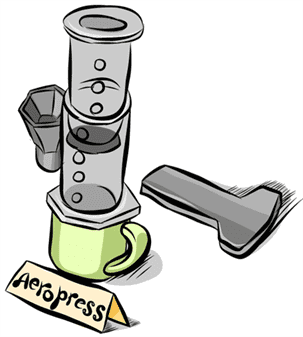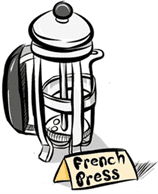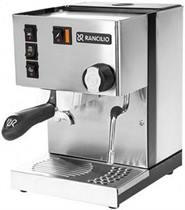The Tanzania Iyela, we have sourced via Nordic Approach. The description below is from their description on the coffee (it can be read here: AAA Iyela…)
Iyela Coffee Group
Iyela Coffee Group is the formation of 239 small scale farmers who have come together to process their cherry at a communal processing site, this is commonly known as a CPU (Central Processing Unit). This has become quite common in Tanzania as the traditional Cooperative structure has been subjected to much corruption and manipulation by those in power.
Iyela was founded by Rashid, a successful entrepreneur and coffee farmer, the CPU was formed in 2011. The farms that are a part of the Iyela Coffee Group range in altitude from 1800 to 1900 meters above sea level.
There are three supervisors working with the group full time to help them implement good quality protocols, Joshua Kasekwa, Issa Mwashiuya and Issaya Mwamgunda.
Previously the coffees here were processed as semi washed coffee, however this has been the first year of processing fully washed coffees for Iyela.
Cherry picking, selection and reception
The main season for the Southern part of Tanzania is June to August, with the coffee trees flowering between September and October.
The cherry for this coffee comes from 239 smallholder farmers, who pick and deliver their cherry to the CPU. When they deliver the cherry, they will hand sort to ensure only the ripe cherry are processed.
The unripe and overripe cherry will be taken back home by the farmers for home processing and will be sold locally or consumed by the farmers themselves.
Pulping, fermentation, washing and drying
The infrastructure in much of Southern Tanzania is quite basic, and at Iyela they are pulping the cherry using a manual pulper that is hooked up to an engine. In this way, they can process 2200 kg per hour. This is in fact quite common in this area of Tanzania for its effectiveness and reasonable price and if done well can achieve good results.
The parchment is then fermented in tanks for 24-36 hours, weather dependent, and then washed and graded in channels. After grading the parchment is soaked for 8 hours before being dried on raised beds, during the drying process the parchment is being handpicked by casual labourers and volunteering farmers, to remove all the defects.
Although the infrastructure at Iyela is simple and somewhat limits their capacity to increase their production, they have grown in number of members as a farm group and they expect to process 100 tons of parchment in 2017 as opposed to the 54 tons they processed in 2016.
Coffee Details
Region: Songwe, Mbeya, Tanzania.
Producers: 239 Farmers, each have an average of 1.6 Ha.
Crop year: 2017.
Altitude: 1800 to 1900 masl.
Screen Size: 19/AAA.
Cultivar: Kent.
Processing: Fully washed.
Drying: Dried on raised African beds. While drying parchment is hand sorted to remove all defects.
Cupping score: 87.
Our Tasting Notes
We found the coffee to have a berry falvours and sweetness with a honey like texture, especially in espresso.
We did find that with pour over it needed a little work, while with espresso it seems to like ratios close to 1:2, which we found unusual for an African coffee.
Pour over
For Chemex, V60, Kalita and other pour over brews this is our recommended starting brew. Grind size is important error on the side of coarse.
- Brew ratio 1:15 seemed best for the coffee.
- First pour 2.5-3x the weight of the coffee – wait until 40 seconds
- Second pour up to 40% of total pour in dose. Wait 40-50 seconds.
- Final pours depend on how much body/mouthfeel you want. We recommend 2 pours of equal ratio (so 30% each of final water pour dose in).
- Total brew time for V60/Kalita between 3.5 and 4 mins and Chemex between 4 and 5 mins (if longer means grind too fine, shorter to course).
Example for V60

- 20g coffee ground fresh – if coffee is younger than 3 days then grind 25-30 seconds before dosing.
- Water temp below 90C is recommended.
- First pour water dose in is 58g – take about 12-16 seconds to pour. Wait until time elapsed is 40 seconds.
- Second pour water dose in an extra 70g – total will be 120g (15-20 seconds pour time). Wait for total time to be 1:45.
- Repeat pouring additional 90g in 20 sec, wait 20 sec. Until total water in is 300g.
This method above is based on the 4:6 method discussed on in the Quaffee posts.
AeroPress
 Once again we prefer the Classic method here
Once again we prefer the Classic method here
- 16g of coffee into the AeroPress using the classic method.
- Add 80g water (82C is best) to the AeroPress stir 3 times. Wait 30 seconds.
- Add another 80g of water to the AeroPress. Add plunger to top of AeroPress
- Wait for total contact time to be 2 minutes.
- Gently plunge the coffee plunger taking around 15-20 seconds to plunge down.
Once the coffee is 2 weeks old you may need to increase the coffee dose to 17g.
French Press
While we normally like this method we did struggle with the ratios here. But did get a good result with using a little more coffee than normal.
- Add 50g of coffee to the plunger/French press.
- Add 800g of water to the press.
- Wait 3 minutes. Stir 3 times. Most of the coffee will sink.
- Skim the floating coffee off the top of the brew with a spoon.
- Gently add Plunger to press, and gently press down, so plunger is just above coffee.
Espresso
This coffee really likes to be prepared as an espresso. We got great results of ratios 1:1.5 to 1:2.5 – we settled on 1:1.9. With an out time of 28 seconds (so quite fine a ground):

We only did this test using the Rancilio Silvia but did a quick brew in the La Marzocco GB5 and 1:19 in 24 seconds worked well.
Grind size should be finer than Central American coffees.
Auto Filter
A surprise here. The coffee preferred a 55g to 1litre dose. With standard filter grind.
Other Methods
While we have not brewed on a mocha pot and syphon, if you have post a comment.
Add your recipe?
How did you get the best out of the coffee? Add a comment tell us.


